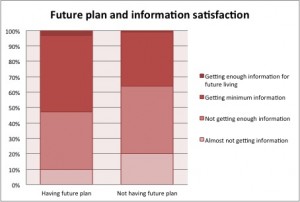Long-term continued support and collaboration by the public and private sectors is necessary to solve major issues facing the disaster-affected regions, such as people becoming independent and local communities being restored. Reconstruction fund management involving multiple stakeholders is one effective way to realize this.
Creation of a fund totalling 196 billion yen
The Miyagi Prefectural government was the first to establish a fund for reconstruction following the Great East Japan Earthquake and announced in August last year the creation of a pooled fund totalling 16 billion yen. The fund can be accessed when necessary and an advantage of the fund is that resources are not tied to a fiscal year. Other prefectural governments later indicated their interest in this type of fund and the Ministry of Internal Affairs and Communications announced on October 17 the establishment of a reconstruction fund totalling 196 billion yen. The choice of direct management by prefectures or management by a foundation was left to each of the prefectures, all of which elected for direct management.
The reconstruction fund is accessible to over 200 local governments in nine prefectures but only part of it has been used. One example is Ofunato City in Iwate Prefecture, which is using the fund to repair community centers and to subsidize real estate and plumbing costs for individuals who re-build homes themselves. Another example is Iwaki City in Fukushima Prefecture, which has suffered a significant drop in tourist numbers over the past year. The city is offering up to 10,000 yen to those who spend a night at accommodation in the city and aims to attract 10,000 people using the system this fiscal year. While there are these kinds of examples, the reality is that many local governments haven’t decided how to make use of the fund.
Foundations used after the Great Hanshin and Chuetsu Earthquakes
After the Great Hanshin Earthquake in 1995 a fund was created focusing on individuals, and after the Chuetsu Earthquake in Niigata Prefecture in 2004 a fund was created for local communities. Both of these funds involved the setting up of a foundation. Policies and functions were carried out via the foundation and a support system of “individuals and communities before public work projects” and “people rather than infrastructure” was carried out. However as each prefecture has opted for direct management this time the fund has become tied to government policy, and it remains to be seen that support for individuals, businesses and NPOs will reach them.
If use of the fund is driven by central government policy then support tends to become concentrated in public works projects and there is a risk of time lag due to an emphasis on equal allocation. There is also the issue of assistance only reaching certain fields and businesses in the private sector. This is why a fund involving multiple stakeholders such as government, residents, businesses, NPOs, academics and so on is best. Using this kind of system, projects which meet the needs of those affected are pursued and it becomes possible to create cost-effective projects by involving the community. To make this happen it is necessary to consider the establishment of a foundation.
To succeed in recovery over the next ten years, close collaboration between the government and the private sector will be needed. A reconstruction fund involving multiple stakeholders would help achieve this.
(by Retz Fujisawa)
Tweet




